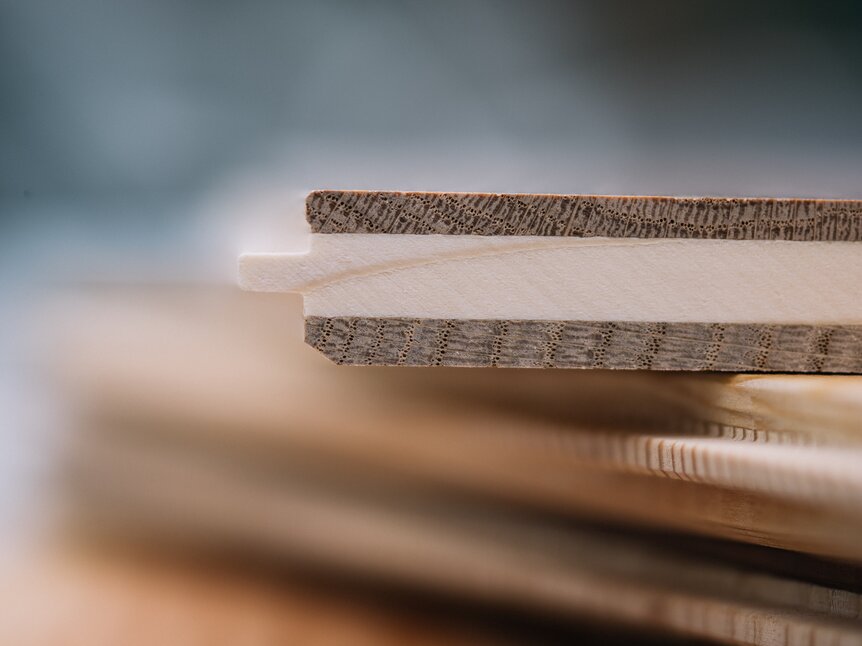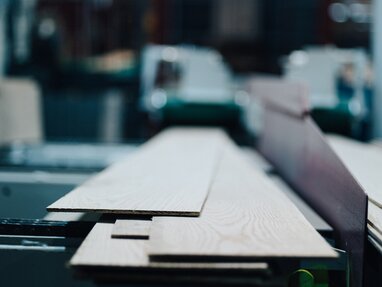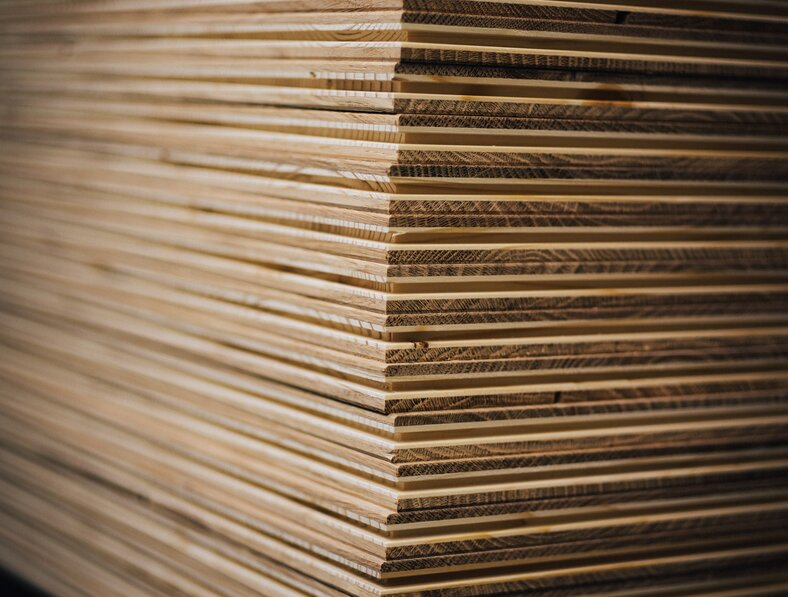

Our Plank Structure
The plank's structure, along with the surface finish, is the most crucial factor in choosing the right flooring.
Mafi's characteristic symmetrical three-layer construction uses the same wood in both the surface layer and the back layer, with identical thermal treatment. This results in an equally strong counterpull that significantly reduces the movement of the wood (swelling and shrinkage behaviour).
The middle layer consists of softwood, glued perpendicular to the surface for added stability. This enhances the plank's flexibility and reduces tension.
Advantages & Features
- Very high stability
- Significantly reduced risk of gaps or cracks
- Ideal for installation over underfloor heating
- Versatile applications
- Possible dimensions of up to 5 meters in length and 30 cm in width
- Optimal resource utilization
- Both the surface and back layers are made of the same wood with the same thermal treatment
- Middle layer made of softwood, glued at a 90° angle
- Bonded with formaldehyde-free white glue






How mafi differs:
A high-quality wooden floor structure is recognized by its symmetrical 3-layer design. Symmetry means that both the visible surface layer and the back layer, also known as the counter-move, must be made from the same wood with the same treatment. This greatly reduces the natural movement of the wood in width.
The middle layer should be glued with correspondingly strong and large softwood boards at a 90° angle to the lamellae. Symmetrical 3-layer planks produce far fewer gaps and are ideal for rooms with underfloor heating.
Christiane Lindner, part of the family management team, explains in the context of our mafi Minds series:

Further assembly types at mafi
What Types of Parquet are there?
The construction is a crucial factor for the durability and stability of the planks. In general, a distinction is made between solid hardwood flooring and engineered hardwood flooring. Solid hardwood flooring consists of the same piece of wood throughout its entire thickness. The main issue with this type of construction is the expansion and contraction, or warping, of the floor, which is the biggest problem associated with this type of structure. Underfloor heating systems exacerbate this issue.
Engineered hardwood flooring, on the other hand, is composed of various layers, starting with the top layer. Below this, softer or more cost-effective wood layers are typically used as a core. Higher-quality engineered hardwood floors include a back layer that acts as a counterbalance, resulting in a three-layer structure.